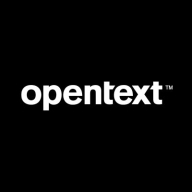

OpenText Core Application Security and Checkmarx One compete in the application security space. Checkmarx One has an edge due to its more comprehensive dynamic application environment capabilities and features best suited for agile and CI/CD processes.
Features: OpenText Core Application Security is cloud-based, offering tools like correlated static and dynamic results, centralized testing management, and 24/7 support. It facilitates compliance with standards like HIPAA. It is ideal for price-conscious users with its occasional use focus. Checkmarx One allows scanning of uncompiled code and supports a wide variety of programming languages. It integrates smoothly with popular development platforms, offering automated security checks and automatic recommendations for vulnerability fixes.
Room for Improvement: OpenText Core Application Security could improve its reporting capabilities and manage false positives better. There is also a need for more robust integration with modern technologies. Checkmarx One could enhance scan speeds and reporting functionality, reduce false positives, and strengthen API security features. Both solutions can benefit from better integration within modern development toolchains.
Ease of Deployment and Customer Service: OpenText Core Application Security provides flexibility with on-premises and cloud deployments, although customer service has mixed reviews regarding response times. Checkmarx One also offers both deployment methods and is generally praised for its prompt technical support. Users find it more straightforward to deploy, backed by comprehensive support services.
Pricing and ROI: OpenText Core Application Security is recognized for its flexible licensing, making it cost-effective for various use cases but can be pricey for smaller deployments. Checkmarx One, though generally seen as costly, justifies the investment with its robust security features and comprehensive offering. Both pricing structures are complex, necessitating careful consideration during procurement.
Overall, between the fast scanning, automation, automatic reporting, and easy detection, it has reduced manual effort enough that we did not need an extra reviewer, even as our codebase or team size grew.
Based on my interactions with the clients, I can tell that there is a return on investment because if something is not profitable and it's not helping to save costs or vulnerabilities, clients wouldn't come back to renew their license year after year.
If you raise a support case with Checkmarx, it is handled smoothly.
The customer support team is amazing and they provide on-phone call, email support, and on-website support.
I have relied on Checkmarx One customer support hundreds of times for several things, and Checkmarx One support is very proactive and very responsive.
Support tickets often stay open for one month to three months, which leads to customer frustration.
I had direct interaction with them, which facilitated how we onboarded Fortify.
Approximately four billion lines of code are being scanned monthly.
Since it is cloud-based, the infrastructure and PaaS, IaaS, and SaaS are taken care of by the cloud marketplace.
Checkmarx One's scalability has changed my organization because the strong collaboration between the development and security team helps us to do things much faster.
If a customer wants to know the tools and the technology used for their application to scan their application, they provide less information on that.
I would rate the stability of this solution a nine on a scale of 1 to 10 where one is low stability and 10 is high.
Checkmarx One is often down when the cloud provider experiences issues.
Integration into the IDE being used would be beneficial so that code does not need to be uploaded to the website and an IDE-friendly report could be generated.
It could suggest how the code base is written and automatically populate the source code with three different solution options to choose from.
If you can improve the speed optimization, it takes around 30 to 40 minutes for checking a build. If you can make it within five minutes or 10 minutes, that would be great.
It would be beneficial if Fortify could check for CVEs (Common Vulnerabilities and Exposures) in third-party libraries, which I currently use a separate dependency checker tool for.
One thing I would highlight is if Fortify can focus more on the centralized dashboard of the tools because nowadays, tools such as SentinelOne also exist for identifying security issues, but they have a centralized dashboard that merges their cloud solution and application security side solution together.
It would be better for Fortify on Demand if they could analyze not only the security pillar but also maintainability, portability, and reliability, covering all pillars of ISO 25000.
For a small team under 50 developers, normal expenses come under 30 to 60K.
Due to the number of years I've implemented Checkmarx One, there are rebates and discounts from the OEM which makes it a lot more profitable.
The pricing should be reasonable, matching what we are paying for.
Since replacing the previous tool, SAST and SCA scans are conducted in a couple of minutes instead of hours or days.
The best features Checkmarx One offers, over the past years, include broad language and technical support that Checkmarx provides, covering most languages.
Checkmarx One has positively impacted our organization as we tend to find vulnerabilities very early in the development cycle.
Fortify helps me find serious issues, such as developers inadvertently leaving access tokens, including API access tokens, in the source code.
On demand you have two levels of reports: the first from the tool, which is the same as we can get from Fortify on-premises, and a next level reporting made by experts from OpenText, leading to a more condensed and precise report as level three.
Additionally, you can integrate Fortify in CICD pipeline, so you get real-time updates about the security issues in your pipeline.
| Product | Market Share (%) |
|---|---|
| Checkmarx One | 10.2% |
| OpenText Core Application Security | 3.2% |
| Other | 86.6% |


| Company Size | Count |
|---|---|
| Small Business | 32 |
| Midsize Enterprise | 9 |
| Large Enterprise | 45 |
| Company Size | Count |
|---|---|
| Small Business | 17 |
| Midsize Enterprise | 8 |
| Large Enterprise | 44 |
Checkmarx One is an enterprise cloud-native application security platform focused on providing cross-tool, correlated results to help AppSec and developer teams prioritize where to focus time and resources.
Checkmarx One offers comprehensive application scanning across the SDLC:
Checkmarx One provides everything you need to secure application development from the first line of code through deployment and runtime in the cloud. With an ever-evolving set of AppSec engines, correlation and prioritization features, and AI capabilities, Checkmarx One helps consolidate expanding lists of AppSec tools and make better sense of results. Its capabilities are designed to provide an improved developer experience to build trust with development teams and ensure the success of your AppSec program investment.
OpenText Core Application Security offers robust features like static and dynamic scanning, real-time vulnerability tracking, and seamless integration with development platforms, designed to enhance code security and reduce operational costs.
OpenText Core Application Security is a cloud-based, on-demand service providing accurate and deep scanning capabilities with detailed reporting. Its integrations with development platforms ensure an enhanced security layer in the development lifecycle, benefiting users by lowering operational costs and facilitating efficient remediation. The platform addresses needs for intuitive interfaces, API support, and comprehensive vulnerability assessments, helping improve code security and accelerate time-to-market. Despite its strengths, challenges exist around false positives, report clarity, and language support, alongside confusing pricing and package options. Enhancements are sought in areas like CI/CD pipeline configuration, report visualization, scan times, and integration with third-party tools such as GitLab, container scanning, and software composition analysis.
What features define OpenText Core Application Security?Industries like mobile applications, e-commerce, and banking leverage OpenText Core Application Security for its ability to identify vulnerabilities such as SQL injections. Integrating seamlessly with DevSecOps and security auditing processes, this tool supports developers in writing safer code, ensuring secure application deployment and enhancing software assurance.
We monitor all Application Security Tools reviews to prevent fraudulent reviews and keep review quality high. We do not post reviews by company employees or direct competitors. We validate each review for authenticity via cross-reference with LinkedIn, and personal follow-up with the reviewer when necessary.